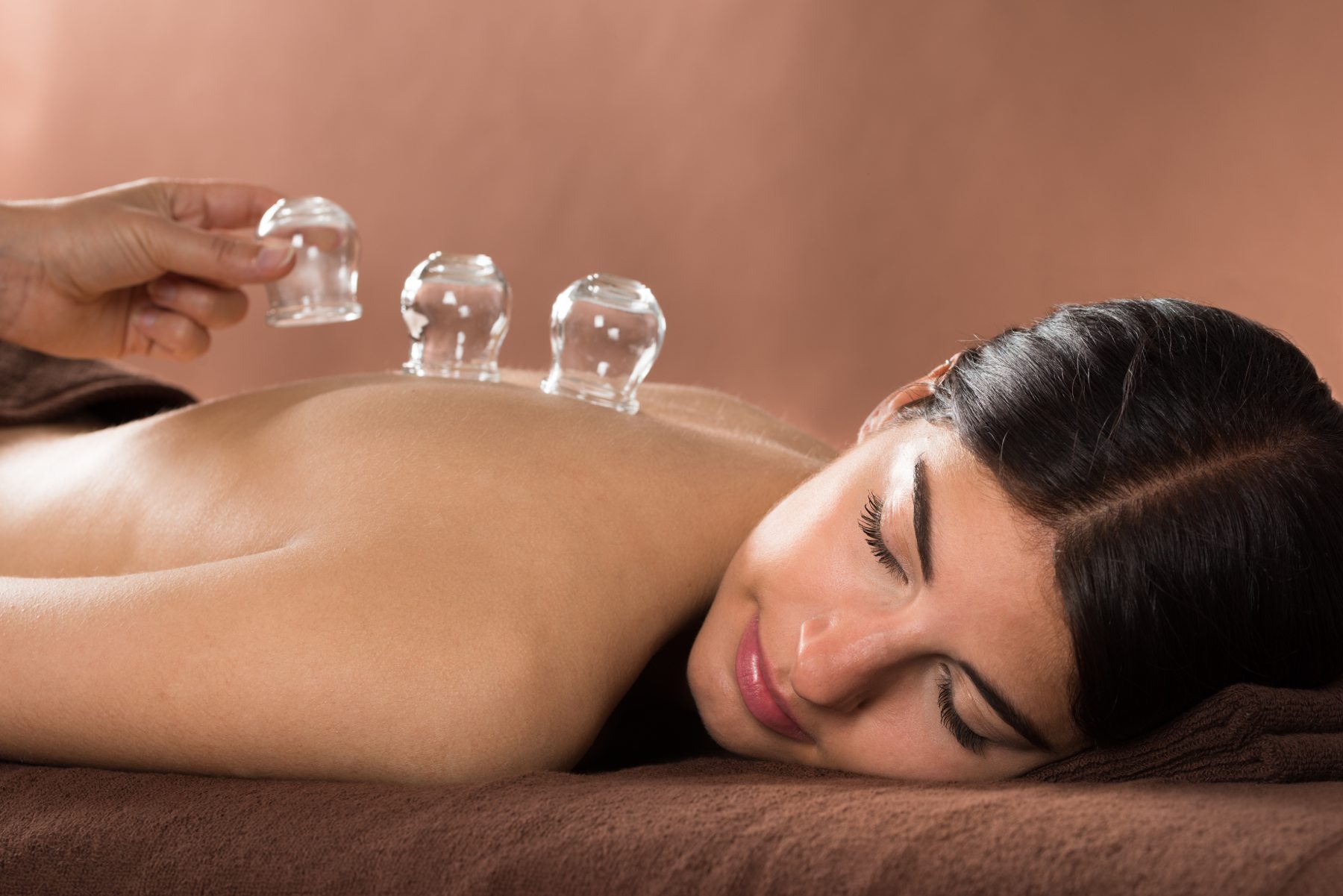
09 Aug 5 Benefits of Cupping Therapy
Perhaps you’ve heard of cupping therapy — or have seen the pictures of actress Jennifer Aniston and Olympic athlete Michael Phelps posting photos of their distinct cupping marks on social media sites like Instagram and Twitter. Ryan Seacrest even enjoyed a session on-air.
While cupping has gained popularity in recent years as a “trendy” holistic treatment among the famous, it actually is a centuries-old technique for treating a host of medical and well-being issues among the masses. Many consider the Chinese responsible for developing cupping but the earliest mention of cupping therapy appears in the Ebers Papyrus, considered one of the oldest medical textbooks in the world, which attributes Egyptians as the first adopters of the therapy in 1550 BC.
As the name implies, cupping involves the use of glass, bamboo, earthenware or silicone cups, which contain a flammable substance such as alcohol, herbs or paper that is heated and then applied to the skin — often to the back along meridian channels — to create suction. As the air cools inside the device, it creates a vacuum causing your skin to rise and redden as your blood vessels expand. The idea is that since skin is highly vascular, the cupping technique can draw out toxins that result in pain, dysfunction and chronic conditions that interfere with optimal health.
Cupping is done as either a wet or dry method. In the wet approach, a therapist makes tiny incisions with a small needles or a scalpel and then does another round of suction to draw out the blood. A typical cupping session involves three to five cups that are left on the skin between five and 15 minutes. Sometimes, a rubber hose is used in place of a fire source to create the vacuum effect. Depending on the method and level of stagnation in the area, cupping therapy may cause some mild discomfort and leave discoloration or raised, circular protrusions on the skin that can last up to two weeks.
Hailed as a treatment for everything from fever, pain and vertigo to menstrual imbalances and weakened appetite, cupping therapy targets a range of medical problems. The British Cupping Society reports the therapy is used to treat blood disorders like anemia and hemophilia, rheumatic diseases such as arthritis and fibromyalgia, fertility and gynecological disorders, skin issues including acne and eczema, high blood pressure, anxiety and depression, allergies and varicose veins.
5 Benefits of Cupping Therapy
Cupping is used around the world to alleviate many medical concerns, but here are five common benefits of the adjunct health technique:
1. Stimulate Blood Flow and Immune Response
Since cupping promotes the release of built-up toxins, it encourages the circulation of both blood and lump vessels throughout the body, creating space for oxygen, living cells and nutrients for faster recovery. The detoxifying factor also is thought to increase immunity in a specific area of the body because the suction causes the release of a histamine-type substance in the skin, which stimulates immune system response.
2. Relieve Chronic Neck and Low Back Pain
Neck and back pain affects millions who seek all types of therapy to reduce their symptoms, from anti-inflammatory medication to inversion to surgery. Cupping therapy is an alternative treatment that the National Institutes of Health (NIH) recognizes as a safe and effective, non-pharmacological short-term approach to relieve chronic neck and low-back pain. The NIH opinion is based on research results gathered from a 2015 systematic review and meta-analysis of the therapy.
3. Decrease Tension and Migraine Headaches
Cupping therapy also is widely used to help those who suffer from tension and migraine (vascular) headaches because of its ability to stimulate blood flow to the brain. In a 2008 study of 70 patients suffering from tension and migraine headaches, researchers found wet cupping improved 95 percent of the participant cases, reducing headache severity by an average of 66 percent and the equivalent of 12.6 fewer days of headache per month.
4. Soothe Sore and Tired Muscles
Cupping is essentially the equivalent of an inverse deep-tissue massage. Instead of applying pressure to muscles cupping gently pulls them upward, which produces a relaxing and relieving sensation. It’s also believed that cupping can affect tissues up to four inches deep from the external skin, releasing toxins and speeding up the recovery process from overworked muscles and connective tissue.
5. Increase Lung Function
One of the most common applications of cupping therapy is to improve lung function and respiratory conditions, such as clearing congestion from the common cold and to control the effects of asthma and chronic cough. In fact, in some of the earliest documentation found on Chinese cupping the therapy is highly recommended for the treatment of pulmonary tuberculosis.
Cupping is a safe technique when performed by a trained professional. To determine if cupping therapy might benefit you, contact Sicari Healing Arts for an evaluation.


